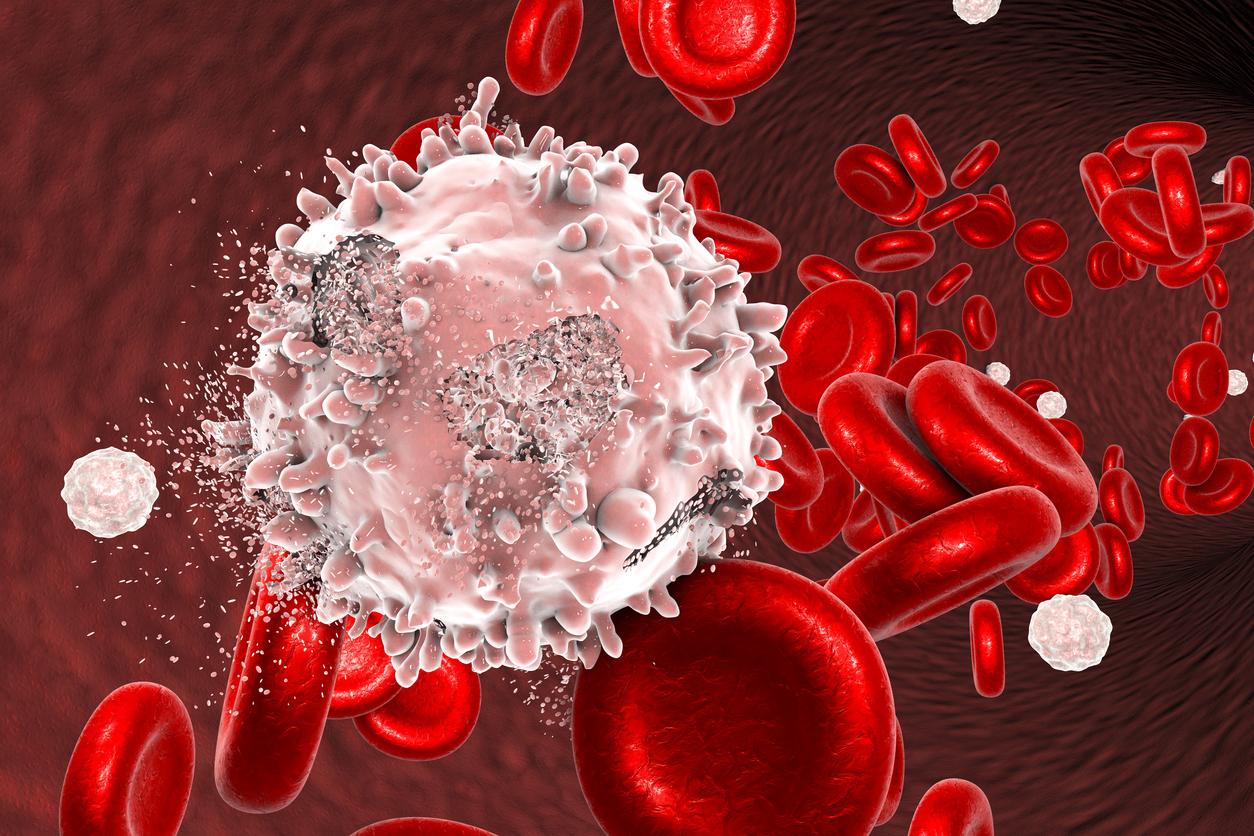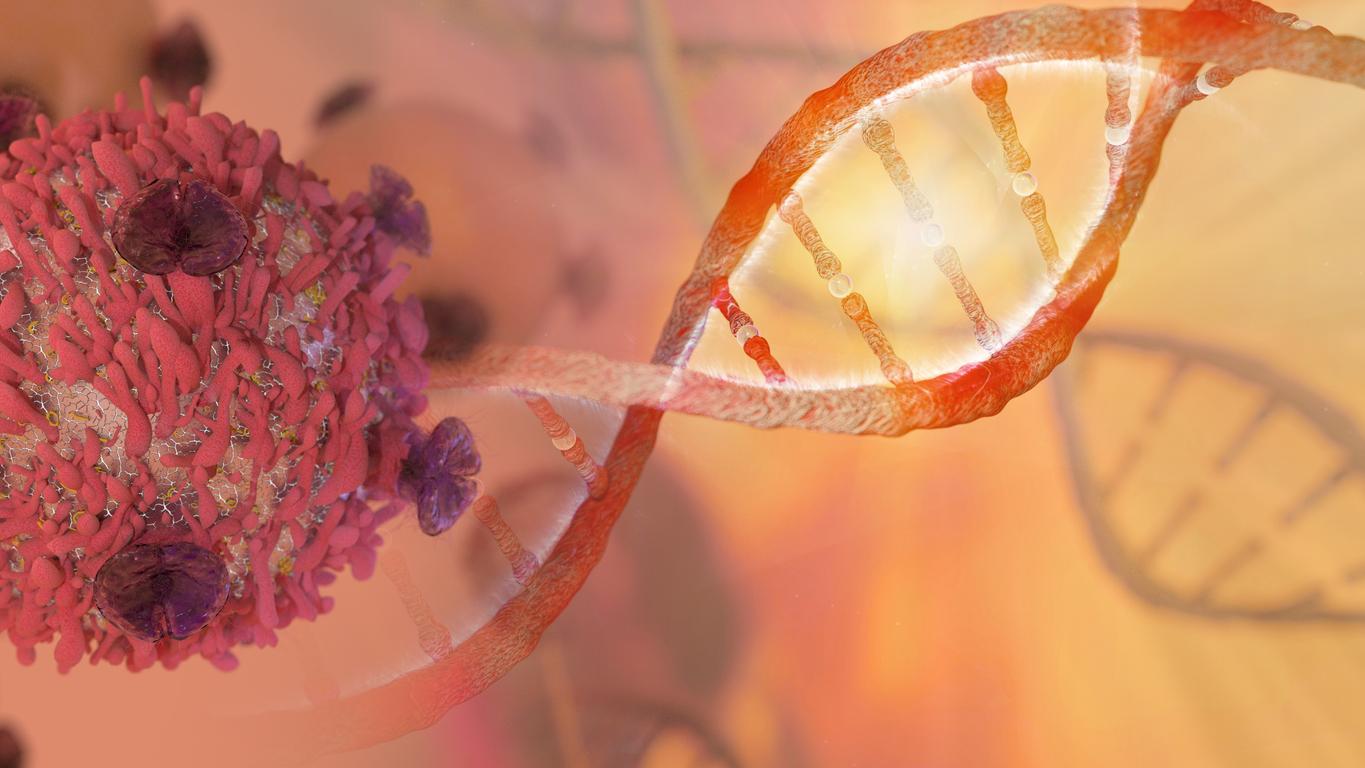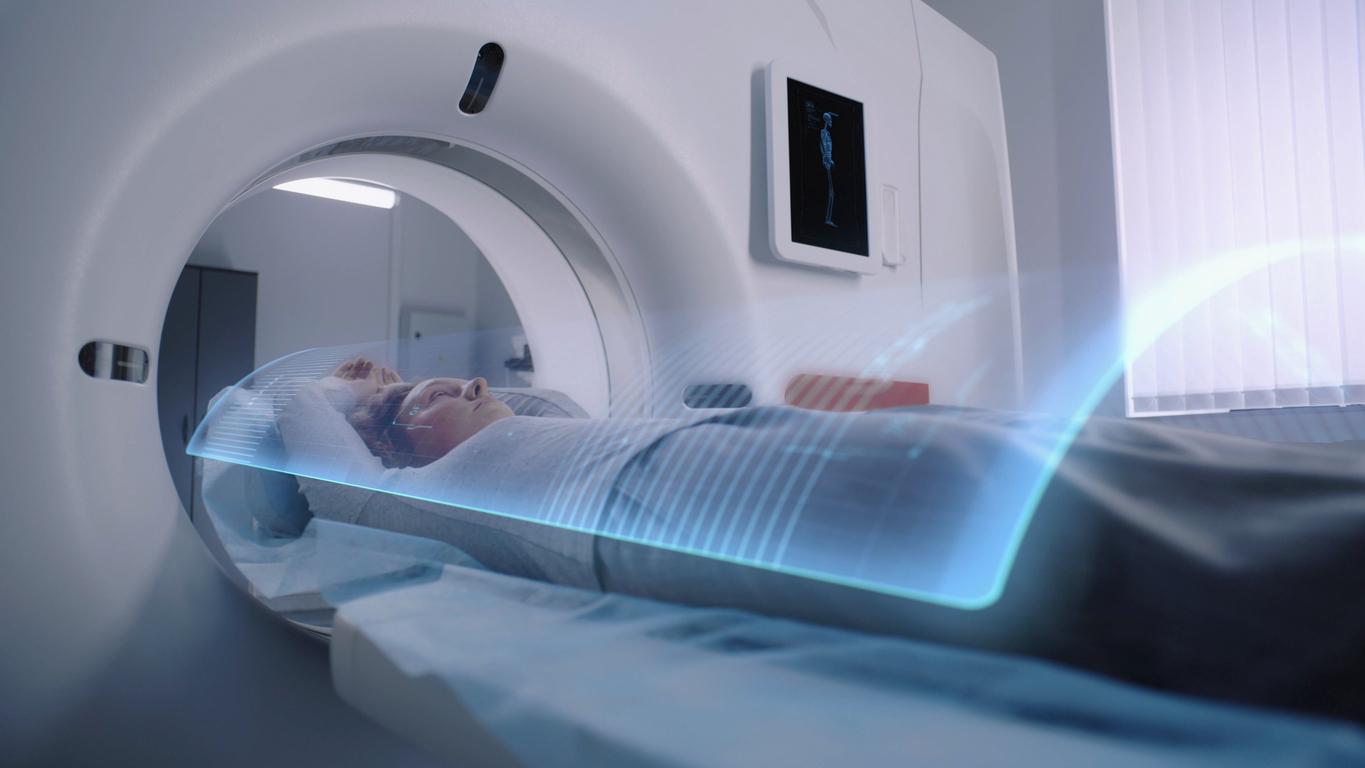By blocking ferritinophagy in mice and patients suffering from acute myeloid leukemia, French and Swiss researchers have succeeded in weakening or causing the death of cancer stem cells.

- Acute myeloid leukemia is one of the most deadly cancers due to the high resistance to treatment of leukemic stem cells, called “dormant” or “quiescent”.
- A recent study shows that these cells depend on “ferritinophagy”, a specific form of autophagy targeting ferritin, mediated by the protein NCOA4.
- By genetically and chemically blocking this protein, dormant stem cells are more likely to die, while healthy blood stem cells remain intact.
It is one of the deadliest cancers. Acute myeloid leukemia (AML) begins in the blood stem cells. In this disease, cells that normally develop into white blood cells, called “neutrophils, basophils, eosinophils and monocytes,” become cancerous and rapidly replace normal cells in the bone marrow, according to the MSD Manual. This malignant tumor is “difficult to treat, with poor prognosis and limited therapeutic options. Leukemic stem cells (LSCs) contribute to treatment failure, relapse and poor outcome,” indicated scientists from the University of Geneva (UNIGE), the University Hospitals of Geneva (HUG) and Inserm.
A “unique 35-gene” genetic signature strongly linked to AML prognosis
In order to improve the patients’ chances of survival, the team wanted to identify potential therapeutic targets. To do this, the scientists conducted a study in which they examined the function of leukemic stem cells, called “dormant” or “quiescent”, which are resistant to available chemotherapies, and the role of the associated molecular mechanisms in the pathogenesis of acute myeloid leukemia. According to the results, published in the journal Science Translational Medicinetranscriptomic analysis revealed that quiescent cells possessed a genetic signature “unique 35 genes” having prognostic importance in people with this cancer. Another discovery: “mechanically, dormant cells exhibit increased autophagic activity, which contributes to their sustained viability.” So, to survive, leukemic stem cells go through this process of self-elimination of waste which, in the absence of external nutrients, allows them to continue to feed themselves.

Acute myeloid leukemia: blocking ferritinophagy reduces tumor growth
Next, the authors quickly noted the dependence of dormant cells on ferritinophagy, a specific form of autophagy targeting ferritin, which is the main iron storage molecule. The latter relies on the nuclear receptor coactivator 4 (NCOA4), a protein. The researchers then rushed to evaluate the therapeutic potential of inhibiting NCOA4-mediated ferritinophagy by genetically and chemically blocking the protein. Trials in leukemia patients showed that deleting NCOA4 was toxic to dormant stem cells, which were more likely to die, “while healthy blood stem cells remain intact.” Further trials in mice confirmed that NCOA4 inhibition reduced tumor burden and impaired the viability and self-renewal of leukemic stem cells.
In their findings, the team highlights the role of NCOA4-mediated ferritinophagy in maintaining the “quiescence” and function of leukemic stem cells and suggest that targeting this pathway could be an effective therapeutic strategy to combat acute myeloid leukemia. For now, “The compound used to block NCOA4 is in early-stage development for future clinical trials,” they specified.


















